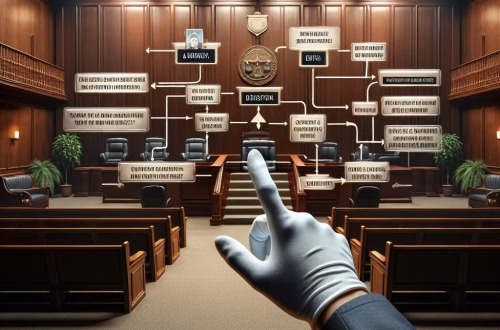DUI Breathalyzer False Positive
Summary:
A DUI breathalyzer false positive occurs when a breath test incorrectly indicates a blood alcohol concentration (BAC) at or above the legal limit of 0.08%. These errors directly impact drivers in all U.S. states by triggering wrongful arrests, license suspensions, and criminal charges despite actual sobriety. Over 30% of DUI cases involve challenged breath test results due to technical malfunctions, physiological factors, or improper administration. Individuals facing these allegations confront immediate driver’s license revocation through administrative per se (APS) laws and potential misdemeanor or felony charges. Commercial drivers, healthcare professionals, and educators face amplified career risks due to licensure implications tied to DUI convictions. The legal challenge lies in disputing the scientific validity of breath test results before restrictive statutory deadlines.
What This Means for You:
- Immediate Action: Request an independent blood test within 2 hours of arrest under implied consent laws (e.g., California Vehicle Code §23612). Blood tests provide more reliable BAC evidence. Simultaneously file a DMV hearing request within 10 days to prevent automatic license suspension (varies by state).
- Legal Risks: A conviction based on false positives carries mandatory penalties including: 48-hour jail minimum (1st offense), 90-day to 1-year license suspension, $390-$1,000 fines, 3-month DUI school (California), and 3-5 years probation. Enhanced penalties apply with prior DUI/DWI convictions within 10 years (Penal Code 667.5) or alleged BAC >0.15%.
- Financial Impact: Expect $10,000+ in total costs: $5,000-$20,000 criminal defense fees, $2,700 DMV license reinstatement fees, $2,500-$5,000 mandatory ignition interlock device (IID) installation (ICTS 2024), and 300% auto insurance rate increases sustained for 3-5 years.
- Long-Term Strategy: Challenge inaccuracies post-conviction through expungement (Penal Code 1203.4) or Certificate of Rehabilitation. Obtain limited driving privileges through restricted license compliance. Mitigate employment impacts with DUI conviction reduction to wet reckless (VC 23103.5) where allowable.
Explained: DUI Breathalyzer False Positive:
Under federal guidelines (49 CFR Part 40) and state evidentiary codes (e.g., California Title 17), breathalyzer tests must adhere to strict protocols to produce admissible BAC evidence. A false positive occurs when non-alcohol substances, equipment defects, or procedural errors cause invalid elevated readings. The National Highway Traffic Safety Administration recognizes four primary interference sources: 1) residual mouth alcohol from recent drinking, 2) acetonemia from low-carb diets/diabetes, 3) chemical interference from paint solvents, and 4) radio frequency interference from police equipment. While implied consent laws (VC 23612) authorize test requirements, procedural violations – including failure to conduct 15-minute observation periods – automatically invalidate results.
State DUI statutes (e.g., VC 23152(a)/(b)) create separate charges for impaired driving versus per se BAC violations. False positives specifically undermine per se charges predicated exclusively on breath test results. Effective counterarguments cite Title 17 violations (maintenance records, operator certification lapses) and physiological defenses (GERD, ketoacidosis). For evidentiary admissibility, prosecutors must establish breathalyzer compliance with the Guth Lab Test matrix and periodic calibration through sworn testimony.
Types of DUI Offenses:
Per Se Violation (VC 23152(b)): Charges based solely on BAC ≥0.08% from breath tests. False positives artificially create this offense where no impairment exists. Enhanced charges apply at ≥0.15% (VC 23578) or with minors in vehicle (VC 23572).
DUI Drugs (VC 23152(f)): Some breathalyzers detect chemical analogs of ethanol, producing false positives for sober drivers using asthma inhalers, mouthwash, or OTC cold medicines. These cases require Drug Recognition Expert (DRE) protocol contestations.
Commercial DUI (VC 23152(d)): Applies to CDL holders with ≥0.04% BAC readings. False positives jeopardize commercial driving privileges and trigger Federal Motor Carrier Safety Act violations.
Common Defences for DUI:
Instrument Validation Defense: Challenge the breathalyzer’s maintenance history and calibration logs. California requires quarterly certification (Title 17 §1221.4) – missing records mandate evidence suppression. Durst Defense attacks partition ratio variability (People v. Bransford – 8 Cal.4th 885).
Physiological Defenses: Medical conditions like acid reflux (GERD) trap mouth alcohol between tests. Hyperventilation and hypoglycemia alter breath volume. Establishing documented conditions with expert testimony (e.g., toxicologist) refutes prosecutor presumption of accuracy.
Procedural Defenses: Non-compliance with the 15-minute observation period (Title 17 §1221.4(a)(3)) or interrupted testing sequence voids results. Rising Blood Alcohol arguments counter false positives by proving BAL was below 0.08% during driving despite later breath test elevations.
Penalties and Consequences of DUI Offenses:
First Conviction: Mandatory 48-hour jail (96 hours if refusal), $390-$1,000 fine, 6-month license suspension (convertible to restricted IID license), 3-month DUI school ($600), 3-year probation.
Second Conviction (10-year lookback): 10 days jail, $390-$1,000 fine, 2-year license suspension, 18-month DUI school ($1,800), mandatory IID installation for 1 year.
Collateral Consequences: Firearm prohibition (PC 29800), professional license revocation (BPC 480), immigration inadmissibility (INA §212), and enhanced penalties for future DUI offenses up to felony charges.
The DUI Legal Process:
1. Arrest & Booking: Breathalyzer administered during traffic stop; driver transported for chemical test if arrested.
2. APS Notice: Officer serves Order of Suspension with 30-day temporary license. Defendant must request DMV hearing within 10 days (VC 13558(b)).
3. Criminal Arraignment: Initial court appearance within 30 days; defendant enters plea (VC 976).
4. Pre-Trial Phase: Discovery process includes breathalyzer maintenance records, dash/body cam footage, and calibration certifications.
5. Motion Hearings: File Motion to Suppress (PC 1538.5) for Title 17 violations or unconstitutional stops.
6. Resolution: Plea bargaining typically occurs within 60-90 days. Trial by jury occurs if no settlement (VC 1093).
7. Sentencing: Mandatory minimums imposed if convicted. Appeals must be filed within 30 days (CRC 8.306).
Choosing a DUI Attorney:
Select board-certified DUI specialists (National College for DUI Defense) with local courthouse experience. Attorneys must possess breathalyzer-specific technical training (ASTM E2220-19 standard) and relationships with toxicology experts. Flat-fee structures ($5,000-$25,000) should include DMV hearing representation. Prioritize attorneys demonstrating consistent breath test suppression success rather than general practitioners.
Other DUI Resources:
National Highway Traffic Safety Administration: Breathalyzer Accuracy Guidelines
California DMV: Administrative Per Se Process
People Also Ask:
Can keto diet cause false breathalyzer positives?
Yes. Ketogenic diets produce elevated acetone levels metabolized into isopropanol in breath analyzers. Studies show false positives up to 0.06% BAC despite zero alcohol consumption (Journal of Analytical Toxicology, 2018). Defendants must provide medical evidence of ketosis and demand blood test corroboration.
Do police have to tell you about breathalyzer errors?
No. Officers aren’t required to disclose known device limitations (Pennsylvania v. Muniz, 496 U.S. 582). However, discovery rules mandate prosecutors provide maintenance records and error logs upon request (Brady v. Maryland). Failure to disclose constitutes grounds for dismissal.
Can you refuse breathalyzer tests legally?
Refusal triggers automatic license suspension (1+ years) under implied consent laws but prevents false positive evidence. Strategic refusal applies when blood test access is probable within 3-hour testing window.
How often are breathalyzers wrong?
FDA-approved devices have 0.005% margin of error under ideal conditions. Field error rates exceed 23% due to improper calibration (CALDOJ 2022 Report). Marginally illegal results (0.08%-0.085%) have 50+% inaccuracy risk.
Can asthma inhalers cause false positives?
Albuterol formulations contain ethanol propellants reaching 0.04% BAC within 5 minutes of use. Proper testing requires 20+ minute observation periods – violations require evidentiary suppression.
Expert Opinion:
Breathalyzer false positives represent systemic flaws requiring immediate technical and legal countermeasures. Defendants must secure blood test corroboration within two hours to overcome the evidentiary presumption of guilt. Partnering with attorneys possessing specific toxicological challenge experience proves critical, as general DUI counsel frequently overlook partition-ratio variability defenses. Timely submission of Title 17 discovery demands remains the most effective strategy for preventing wrongful convictions.
Key Terms:
- California DUI breath test false positive defense
- Fight breathalyzer false readings in DUI cases
- Physiological defenses for inaccurate BAC test
- Ketosis false positive DUI breathalyzer defense
- DMV APS hearing for breath test license suspension
- Breathalyzer calibration error dismissal motion
- Title 17 violations suppress DUI breath evidence
*featured image sourced by Pixabay.com




